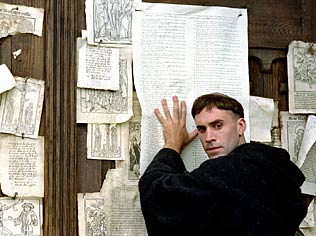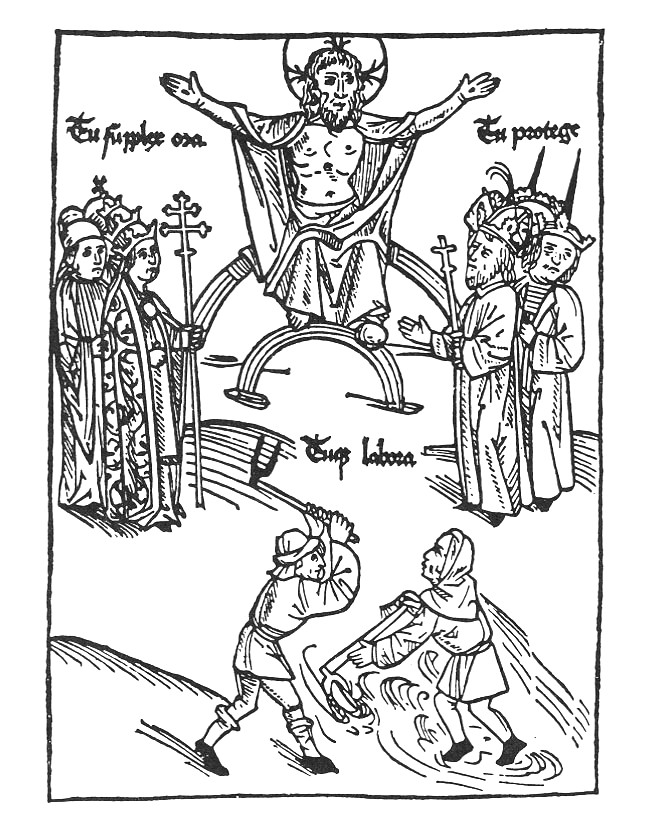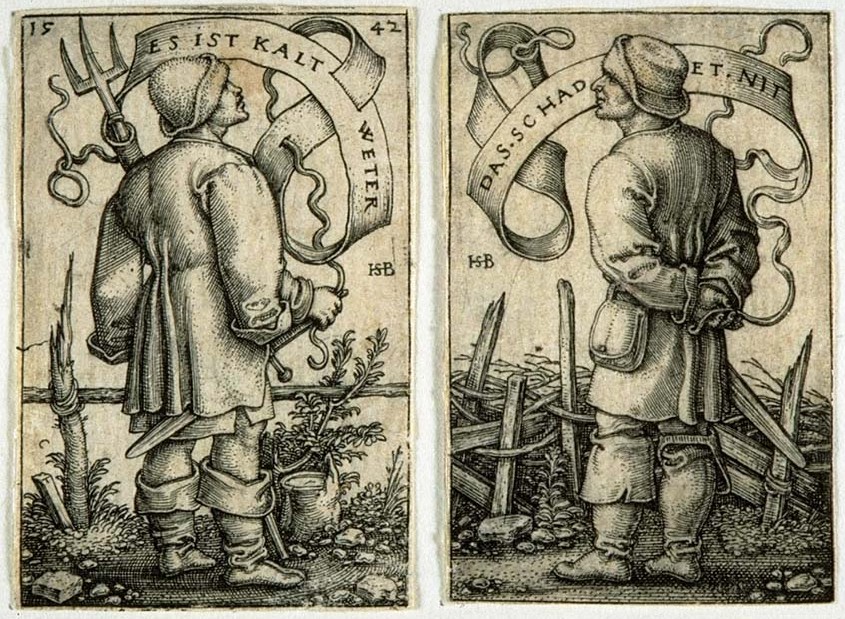Textbook Reading: Lindberg, chapter 1; McGrath, chapter 1. For reference, consult also Primer: The Institutional Structure of the Holy Roman Empire and Primer: Reforming the Holy Roman Empire.
I. The Reformation in History
Excercise: Posting the Ninety-Five Theses

Luther, portrayed by Joseph Fiennes in the movie Luther (2003), affixed the 95 Theses to the door of the castle church in Wittenberg. Funding for the film was provided in part by Thrivent Finacial, an insurance company for Lutherans.
Veit Ludwig von Seckendorff (1626-1629)
Johann Stephan Pütter (1725-1807)
Leopold von Ranke (1795-1886)
Map: Protestant Confessions, ca. 1600
.jpg)
Anon., Lutherus Triumphas (Wittenberg, ca. 1568), woodcut, 21.3 x 33.2 cm.. This etching illustrates the deepening of divisions between the “confessions” of mid-sixteenth century Germany, Protestant and Roman Catholic, after the conclusion of Religious Peace in the Empire in 1555. The image identifies Luther by the letters “D.M.L.” ("Doktor Martin Luther") presenting him as the prophet of truth against the Pope Leo X as the personification false religion and human arrogance. Arrayed below Luther are theologians of the Protestant movement, headed by Philipp Melanchthon; opposing them are Jesuits (“IHESVITAE”), led by the Melanchthon's former student, the theologian Friedrich Staphylus (1512-1564), who drags behind him a chimera, the monstrous embodiment of deceit. Staphylus is labeled “Iudas” in this image because he had joined Luther's cause early on but later switched sides in the early 1550s. See Harry Oelke, Die Konfessionsbildung des 16. Jahrhunderts im Spiegel illustrierter Flugblätter (Berlin, 1992). Image source: zeno.org.
II. Contexts: Society and Institutions
A. Plague and Depression
1) Dimensions of the Pandemic
2) Agrarian Depression
Exercise: Documents on Late Medieval Rural Society
B. Structures and Tensions of Rural Society
1) Commune and Household
2) Violence and Negotiation
III. The Empire: An Era of Reform
A. The Empire: A System of Shared Rule
B. Imperial Reform: Continuity and Change
Map: The Spread of Plague, 1347-1351
Graph: The Human Cost of
Plague: Barcelona, 1348-1653
Graph: Child Mortality and
Plague: Siena, 1348-1400
Graph: Prices and Wages in
England, 1260-1600
Graph: Sixteenth-Century Price
Inflation
Map: Village Desertions in Late Medieval Germany
Chart: A Typical Nucleated Medieval Village
Image: A Late Fifteenth-Century
Village
Map: Central Europe in 1400
Map: Central Europe in 1547
Chart: Urban Foundations in
Central Europe, 1150-1950
Image: A Typical German City:
Frankfurt (1572)
Map: Jewish Communities in
the Rhineland, 1349



Top image: Detail of Pieter Bruegel the Elder (1525-1569), Landscape with the Fall of Icarus (c. 1558). Oil on canvas, mounted on wood. 73.5 x 112 cm. Musées royaux des Beaux-Arts de Belgique, Brussels. Image source: The Artchive.
Bottom image: Hans
Sebald Beham (1500-1550), "Es ist kalt Weter" & "Das schadet nit"
("It is cold weather" and "That's of no concern"), ca. 1542.
Engravings, image size: 45mm x 29 mm each. Image source: University of Kansas,
Spencer Museum of Art. The artist identifies himself with the
device "HSB":
![]()
Image left: This engraving by Jacob Meydenbach illustrates the medieval concept of the three orders of society and their functions. In the upper left-hand corner are a prelate and a pope, identified by his tiara, who represent those who pray; in the upper right are an emperor and a king or noble, representing those who protect; at the bottom are two peasants, standing for those who work. Source: Johann Lichtenberger, Prognosticatio (Mainz, 1492); Werner Rösener, Peasants in the Middle Ages (Chicago: University of Illinois Press, 1992).